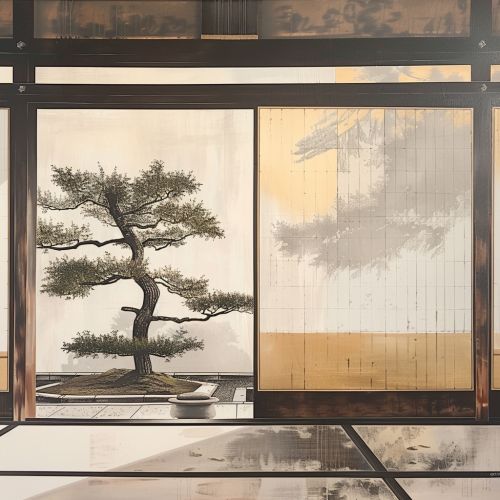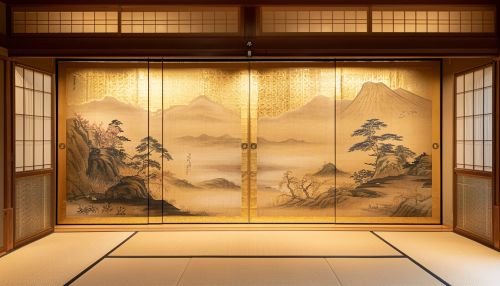Ma (aesthetics)
Definition and Origins
Ma is a traditional Japanese concept that refers to the aesthetic value of the space or interval between objects or events. It is a fundamental principle in various aspects of Japanese culture, including architecture, music, theater, and visual arts. The term itself can be translated as "gap", "space", "pause", or "the space between two structural parts".
The concept of Ma is deeply rooted in the Japanese worldview, which emphasizes the interconnectedness of all things and the importance of balance and harmony. It is closely related to the principles of Zen and wabi-sabi, which value simplicity, naturalness, and the beauty of imperfection.
Philosophical Background
In the philosophical context, Ma can be understood as an appreciation of the emptiness or void that is inherent in all things. This perspective is influenced by the teachings of Zen Buddhism, which emphasize the importance of emptiness and the transient nature of all phenomena.
In this sense, Ma is not just the physical space between objects, but also the psychological or spiritual gap that allows for contemplation and reflection. It is the silence between the notes that makes music, the pause between words that gives meaning to a sentence, and the empty space in a painting or a building that gives it depth and dimension.
Ma in Japanese Arts
In the realm of Japanese arts, the concept of Ma plays a significant role in shaping the aesthetic principles and artistic practices.
Visual Arts
In Japanese painting and calligraphy, Ma is often represented by areas of emptiness or negative space. These empty spaces are not considered voids, but rather active elements that contribute to the overall composition. They provide a visual rest, create balance, and enhance the focus on the depicted subjects.


Architecture
In Japanese architecture, Ma is reflected in the spatial design and arrangement of buildings. It is often expressed through the use of empty spaces, asymmetrical layouts, and the integration of natural elements. The concept of Ma in architecture is not only about the physical space, but also about the experience of time and movement within that space.
Music and Theater
In traditional Japanese music and theater, such as Noh theater and Kabuki, Ma is expressed through the use of silence and pauses. These pauses are not merely absences of sound, but are considered an integral part of the performance, providing a space for emotional reflection and anticipation.
Ma and Modern Aesthetics
The concept of Ma has also influenced modern aesthetics, both within and outside Japan. In contemporary art and design, the principles of Ma are often applied to create minimalist works that emphasize simplicity and the effective use of space.
In the field of music, the idea of Ma has influenced various genres, from experimental music to ambient and electronic music. The use of silence and pauses in these genres can be seen as a reflection of the Ma aesthetic.
Conclusion
The concept of Ma is a unique aspect of Japanese aesthetics that emphasizes the value and beauty of space and emptiness. It is a principle that permeates various aspects of Japanese culture, from traditional arts to modern design, and continues to influence aesthetic practices around the world.
